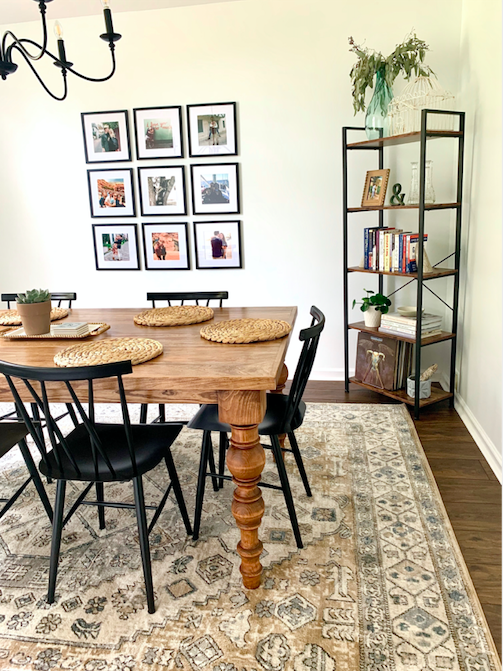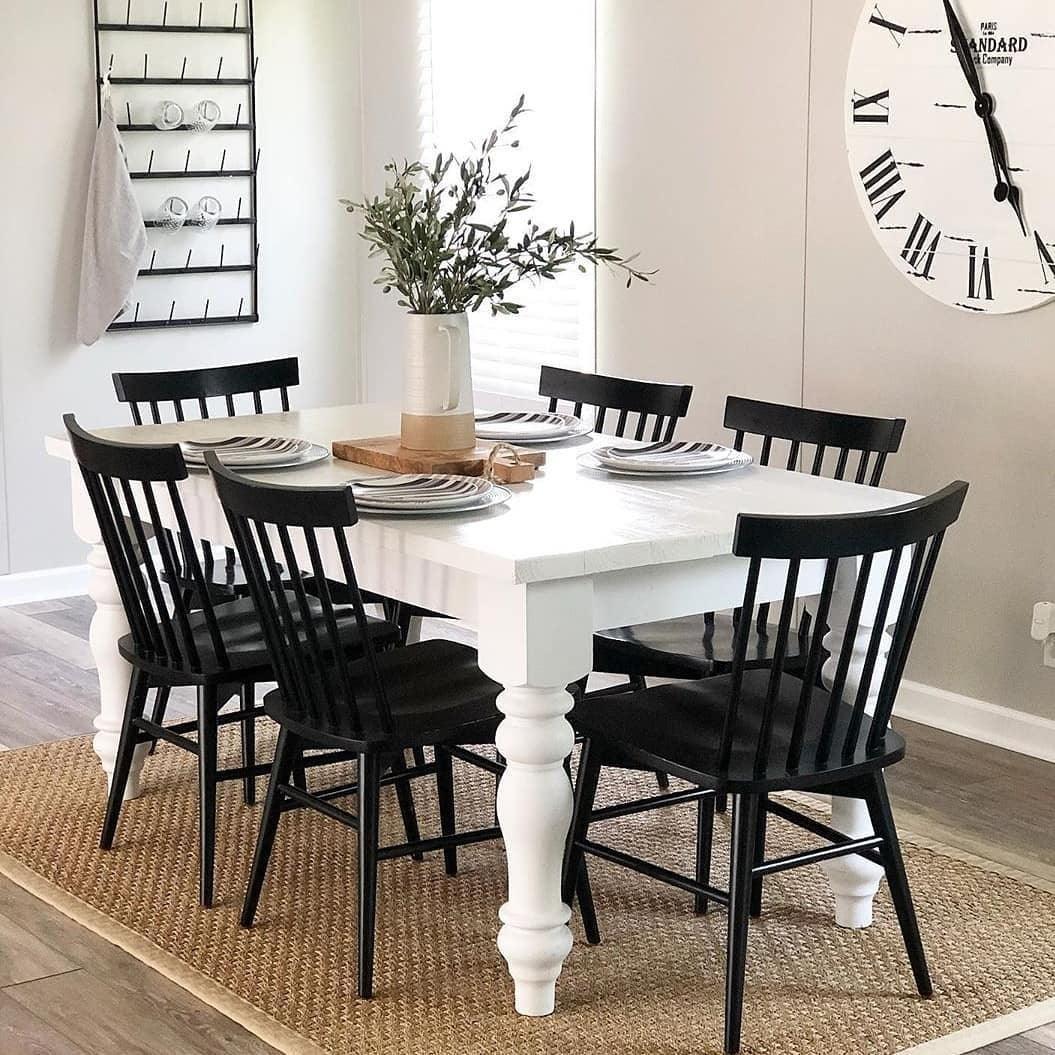Why Dining Room Table Legs Are Crucial for Your Table’s Stability
Why Dining Room Table Legs Are Crucial for Your Table’s Stability
Blog Article
From Standard to Modern: Find the Ideal Dining Area Table Legs for Your Design
The option of dining-room table legs plays a crucial function in specifying the general character of your area, connecting the space between traditional craftsmanship and contemporary looks. While timeless designs such as cabriole and turned legs stimulate a feeling of timeless sophistication, modern styles like hairpin and geometric options provide an opportunity for striking aesthetic rate of interest. Reviewing the right equilibrium in between these styles needs a nuanced understanding of your existing decor and personal taste. As you think about these elements, the inquiry continues to be: how can you flawlessly integrate these diverse leg designs to produce an unified eating experience?
Comprehending Table Leg Styles
The variety of dining-room table leg styles can significantly influence both the aesthetics and performance of the area. Each leg design adds special useful features and visual aspects, catering to diverse design preferences and usage needs. Comprehending these styles is crucial for choosing the right dining table that lines up with your general indoor design vision.
For example, conical legs offer a clean, timeless look that can enhance a room's style, while pedestal bases provide stability and make the most of legroom, making them ideal for smaller rooms. Hairpin legs, a hallmark of mid-century modern-day layout, introduce a commercial panache, permitting a ventilated, open feeling. Likewise, trestle legs stimulate rustic charm, supplying robust support and a sense of timelessness.
Moreover, the choice of products plays a significant duty. Wooden legs can bring warmth and texture, whereas metal alternatives often communicate a sleek, modern ambiance. Inevitably, understanding table leg styles is essential for creating a natural eating area that mirrors personal design while guaranteeing usefulness and comfort. By attentively thinking about these components, you can enhance both the aesthetic and functional charm of your dining space.
Conventional Table Leg Options
When choosing dining-room table legs, standard alternatives frequently embody timeless elegance and workmanship. These layouts show a rich heritage and a commitment to high quality, making them excellent for those who value traditional visual appeals.
Among one of the most famous standard leg designs is the cabriole leg, identified by its stylish bent shape. This layout commonly features attractive makings and is most frequently found in Queen Anne and Chippendale furnishings. Another preferred choice is the turned leg, which boasts a collection of smooth, rounded forms that provide a traditional look while preserving stability.
In addition, the straight leg, while straightforward, uses a durable and unadorned framework that can mix perfectly with a selection of tabletop styles. For those drawn to ornate describing, claw-and-ball feet legs stimulate a sense of splendour and can act as a stunning focal factor in any kind of eating space.
Lastly, pedestal bases, although not purely legs, offer an alternative typical choice that enables sufficient legroom and can be magnificently sculpted. Each of these typical leg designs contributes to the total atmosphere of an eating space, weding feature with visual appeal.

Modern Table Leg Layouts
Modern table leg styles provide a varied series of styles that emphasize clean lines and innovative products. These layouts often focus on performance while functioning as striking focal factors within a dining room. Minimalist aesthetic appeals are prevalent, with legs crafted from materials such as steel, glass, and engineered wood, which add to a airy and modern feeling.
One popular layout is the hairpin leg, defined by its slender, tapered structure that gives stability without overwhelming the tabletop (dining room table legs). This design is frequently found in mid-century contemporary furniture and can effortlessly match different dining table forms. One more fad is using geometric shapes, where legs might handle angular or unbalanced forms, including aesthetic interest and a touch of artistry

Blending Designs for Distinct Spaces
Frequently, house owners look for to create distinct dining spaces that reflect their personal style by mixing numerous design aspects. This method enables the consolidation of diverse aesthetics, causing a harmonious yet unique environment. Pairing a rustic wood table with sleek, modern-day metal legs can develop an eye-catching comparison that boosts the space's total appeal.
In addition, integrating vintage table legs with modern table tops can evoke a feeling of history while maintaining a contemporary perceptiveness. Such combinations not just display specific preference yet also motivate creativity, permitting house owners to curate a space that feels both personal and welcoming.
Color plays an important role in this mixing process; picking table legs that complement or comparison with the existing color redirected here pattern can enhance Related Site aesthetic rate of interest. For example, whitewashed legs can soften the boldness of a dark table surface area, creating a well balanced visual.
Tips for Choosing the Right Legs
Selecting the right table legs is crucial for attaining both capability and aesthetic appeal in your dining space. Begin by thinking about the overall design of your space. Typical setups benefit from legs that include elaborate carvings or turned layouts, while contemporary areas may require sleek, minimalist designs.
Next, evaluate the elevation and stability of the legs. dining room table legs. Conventional table vary between 28 to 30 inches in elevation, so ensure the legs enhance this measurement for comfort. In addition, robust materials, such as hardwood or steel, can improve security and longevity
Review the leg form as well-- alternatives consist of directly, tapered, or stand layouts. Straight legs use a timeless appearance, while tapered legs can add a touch of elegance. Pedestal bases supply enough legroom and are perfect for smaller spaces.
Verdict
In summary, selecting the perfect eating space table legs calls for mindful factor to consider of both contemporary and conventional styles. Typical alternatives such as cabriole and transformed legs provide classic style, while modern-day styles like hairpin and geometric forms supply a contemporary touch. By balancing leg style, elevation, and product with the Look At This total décor, a cohesive and welcoming ambience can be achieved. Inevitably, the picked table legs ought to mirror the preferred visual, enhancing the eating experience within the space.
The selection of dining room table leg styles can dramatically influence both the aesthetic appeals and capability of the area. Ultimately, recognizing table leg styles is essential for creating a cohesive dining area that shows individual style while ensuring practicality and comfort.One of the most iconic traditional leg designs is the cabriole leg, identified by its elegant bent shape. Straight legs supply a timeless appearance, while conical legs can add a touch of elegance.In summary, choosing the ideal eating space table legs requires cautious factor to consider of both traditional and modern-day styles.
Report this page